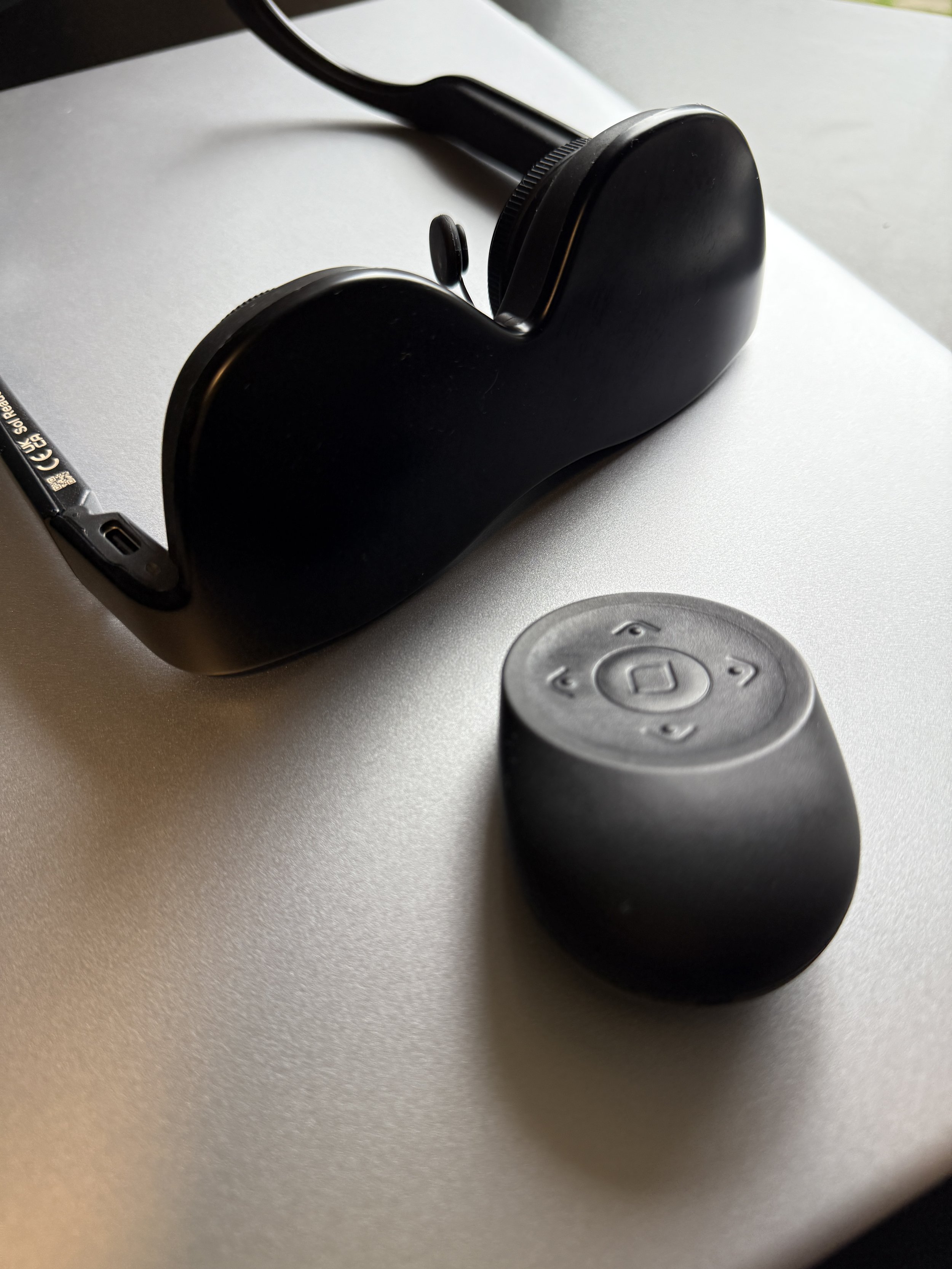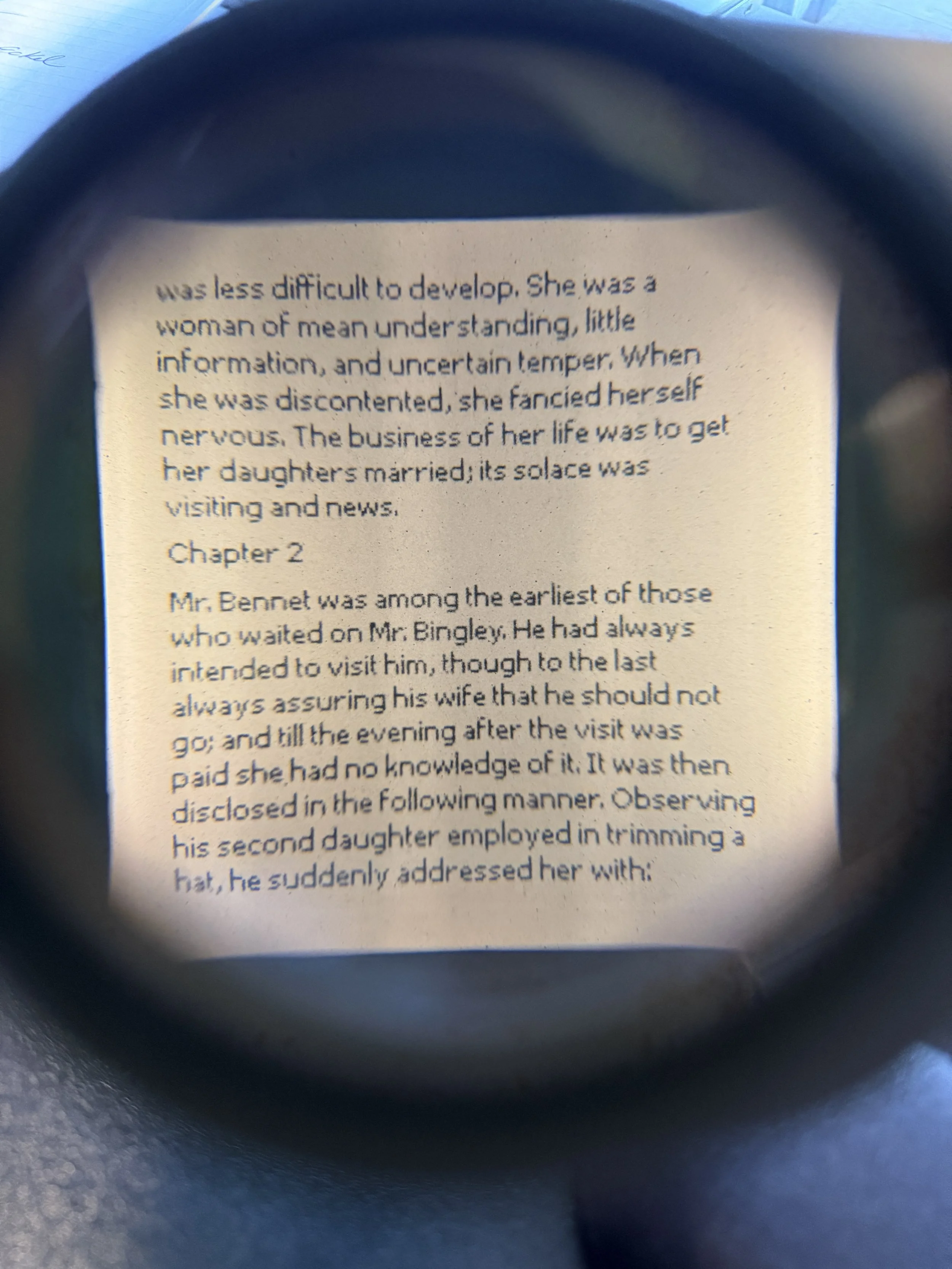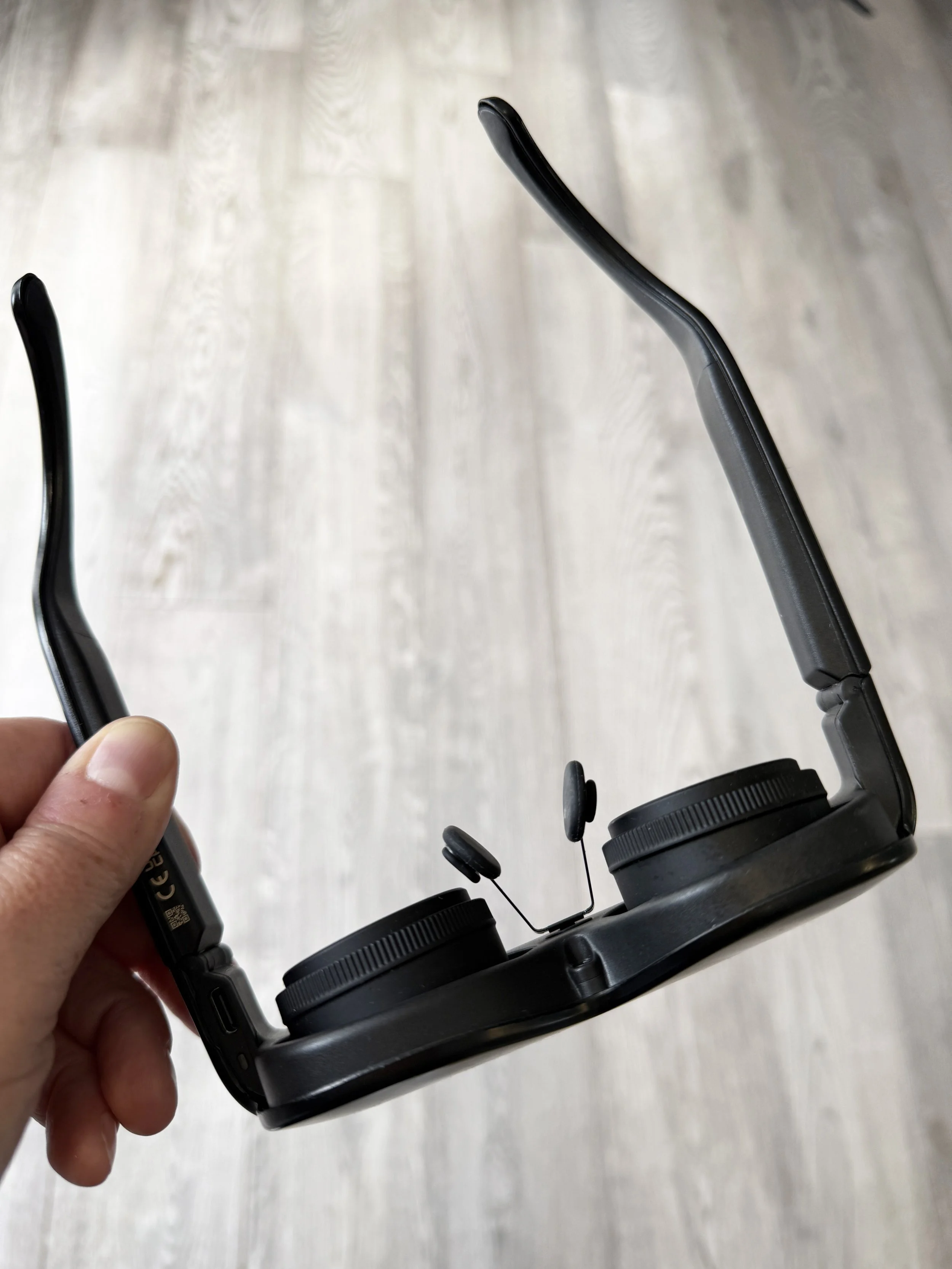A Wearable Ereader? Sure!
Maybe you’ve already seen these advertised or perhaps even satirized on your social media feeds? Sol, a reading technology company, is selling what they call the world’s first wearable ereader. They are a kind of blackout pair of glasses where the inside of the lenses are an e-ink display that renders ebooks. It’s an astonishingly cool and weird invention.
How it works
The glasses pair with both a mobile app and a tiny remote control. Use the app to load books onto your wearable. There are a few pre-loaded (including the New Testament — ?! — which is a choice), in addition to a library of open-source titles and a bookstore to shop in. The most recent update is that you can sync the mobile app with your Kindle app to have access to a Kindle library, as well.
The tiny remote control is basically a fancy mouse. Readers use it to navigate around their library and to turn pages in their books. Once paired with the reader, it is very easy and intuitive to use.
But why?
There is a lot of tech that is developed with astronomical amounts of money and resources and sometimes it feels like a head scratcher. Some things don’t need innovating! And this reader seems like it falls in that category. Someone on Reddit said, “What's the point? What's the value? It is cool, not gonna lie, but it looks more inconvenient to use for reading than a book, eReader, or phone, and doesn't seem to have any benefits over those alternatives.” And these are good questions.
The company claims that you get an immersive reading experience like no other. There are no notifications, no doomscrolling, nothing to take you out of the book you are focused on. And, aside from the tiny clicker, it is hands free.
Looking into a round lens at a snippet of text from Pride and Prejudice by Jane Austen. The font is crude, the screen is choppy and has a lot of small black dots, also known as artifacting.
Is it accessible?
Sort of? But not really? I bought a Sol Reader because I wanted to explore whether or not this technology could be useful for readers with print disabilities. It might be useful for someone with mobility issues, that’s for certain. It is genuinely hands free reading which could be very useful for a reader that needs an experience that comes with a minimum of physicality. For someone for whom holding a book or ereader is a burden, this would be useful device, especially as there is an auto-page turn mode.
Would it work for a reader with low vision? I don’t think so. For folks who wear glasses to read, these work without glasses. The first time one wears them, you adjust the lenses to suit your vision. They have adjustable diopters for each lens. They worked nicely for my very minimal reading needs. There are software options for text sizing as well but the low resolution screen, spindly and crude font, and heavy artifacting on the screen are going to make low-vision reading uncomfortable. And, so far as I can tell, there are no text-to-speech interactions.
Sideview of the glass showing how thick they are, the adjustable lenses, and nose pads.
Bonus
Purchasing the glasses comes with an inviation to the Sol Reader Discord where you can interact with other users, participate in a book club, file feature requests and bug reports, and speak directly to the developers. For the nerdier e-reading technologists among us, this is pretty fun. The main complaints seem to be about how tricky it is to sideload books and to get around DRM restrictions on purchased books.
That said, they are expensive. I paid $349 Canadian and had to pay ridiculous import duties of about $150 CAD. My trusty Kobo was much cheaper and, frankly, far easier to use.
You might find this more in-depth review useful if you want to know more.
They are definitely weird looking. I will almost certainly be improving mine with googly eyes!




